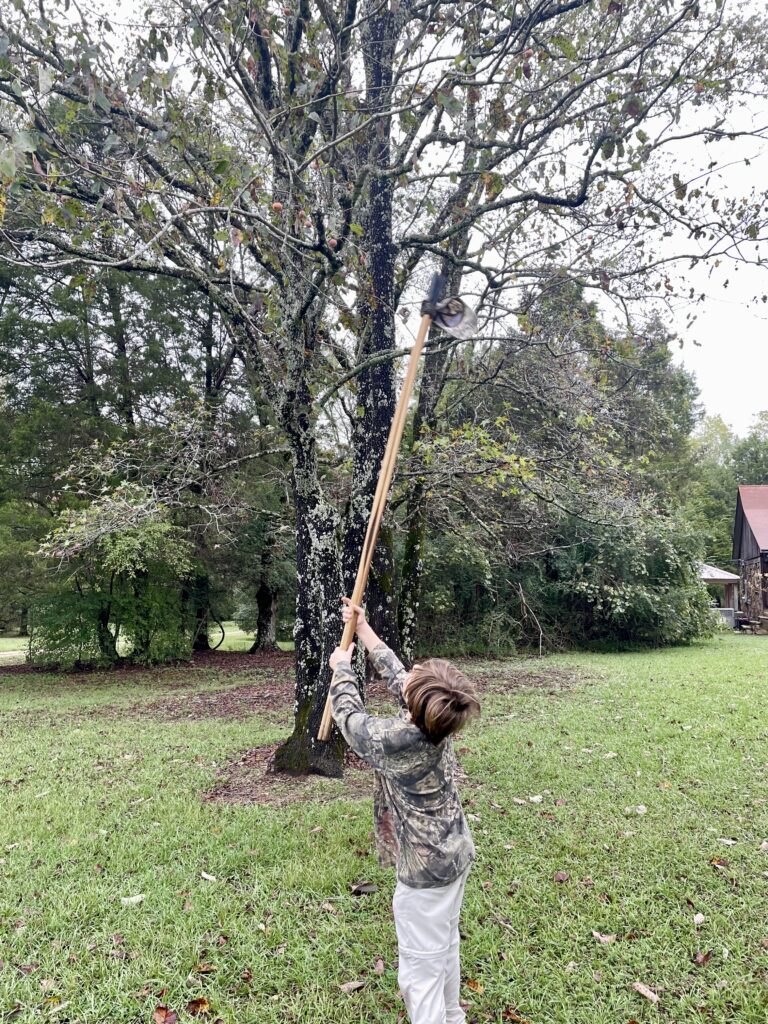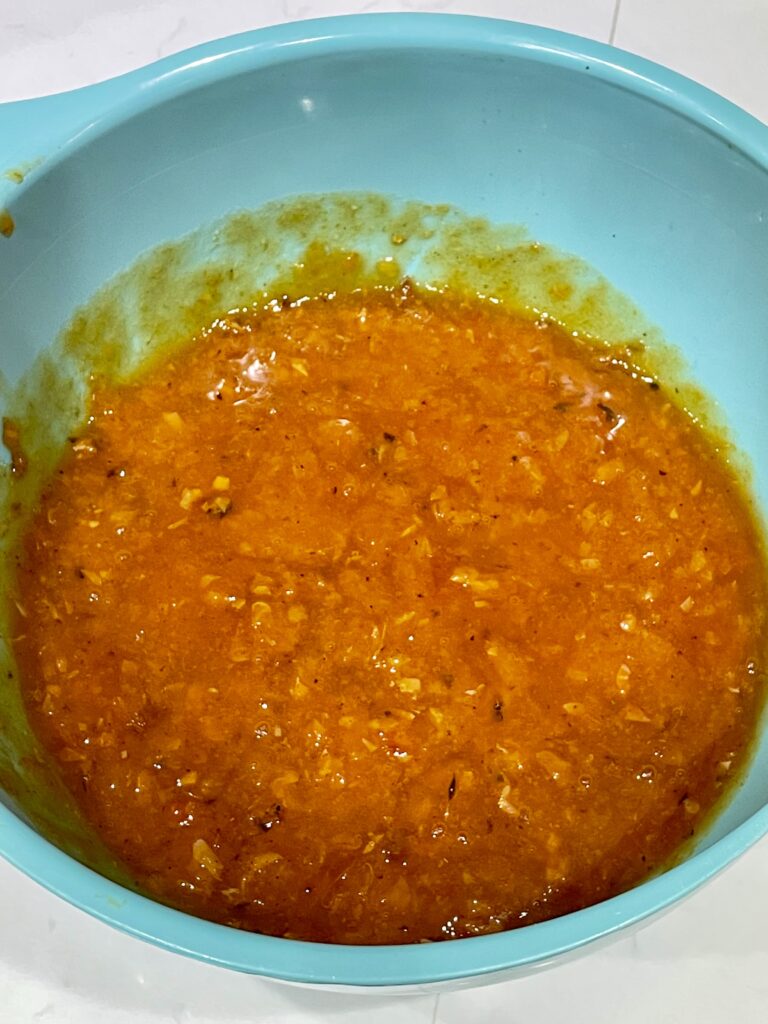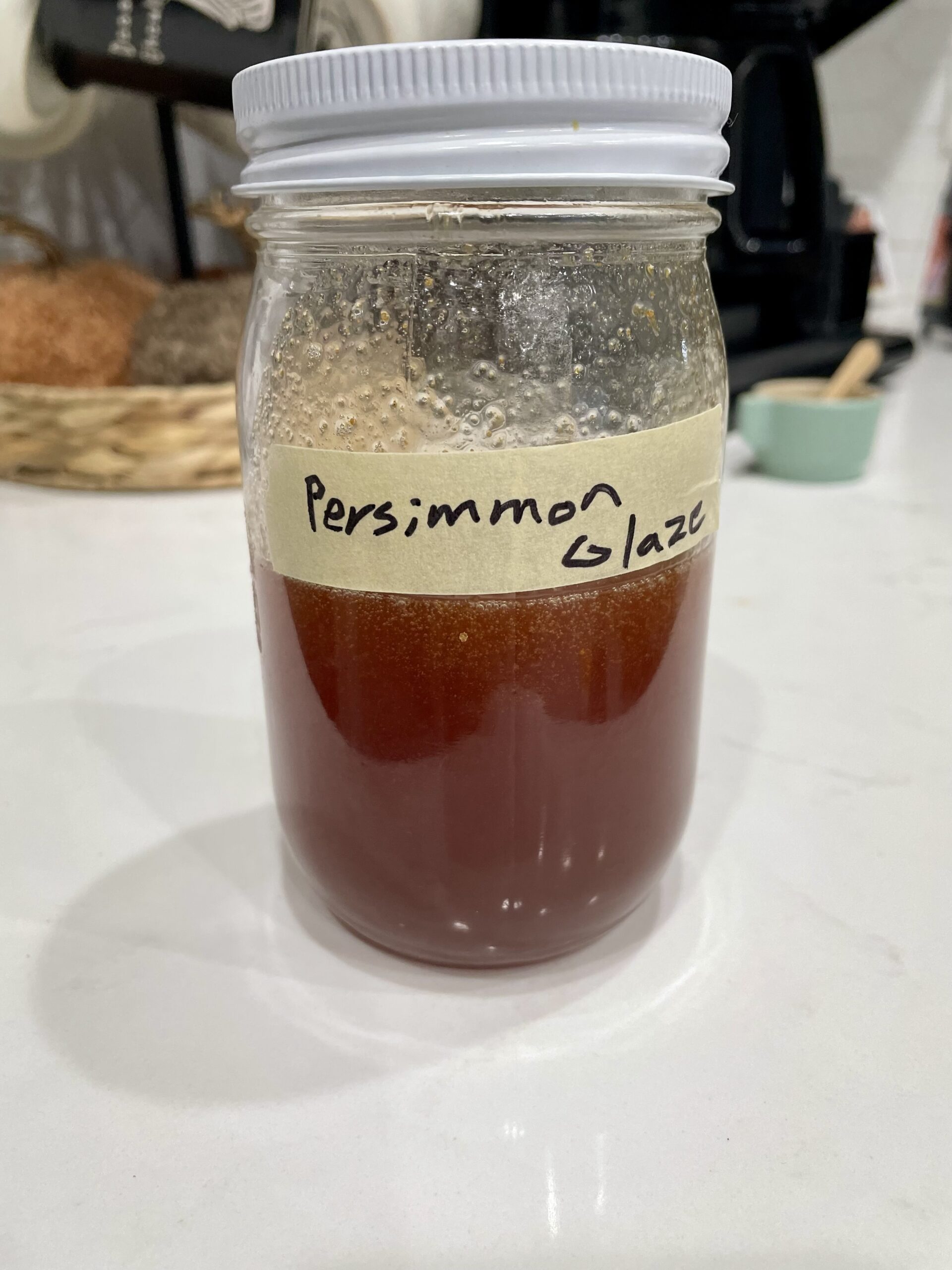I like to use a glaze to add a sweet crust to grilled or smoked meat. The persimmon is one of those trees that many people know about but is often overlooked nowadays. Many species exist. Most are native to Asia. There the fruit is featured in many traditional culinary practices.
The American Persimmon is native to the southeastern United States, as far north as Connecticut, and as far west as Texas. The wood is close-grained and heavy. Hunters know the fruit, which ripens in the fall, as a food source for deer and other game. After years of watching our wild persimmons drop fruit season after season, I finally decided to experiment with some.
Making the Glaze
Persimmon fruit is mushy when ripe with a plum or almost peach-like flavor. I started by gathering about 10lbs off the ground and where I could reach. I also enlisted my 9 year old to knock branches. Ripened fruit would easily fall.

Next, I gently washed the fruit and squeezed it through a colander to remove the seeds and caps. I initially tried to cook this pulp with spices and other ingredients to make a sauce. However, I quickly found that it was too fibrous to get a desirable consistently. So I resorted to straining through a fine wire sieve. Cheese cloth would also probably work. This left me with about a pint and a half of juice.

I simmered the juice at just barely below a boil to start reducing it. Simultaneously, I started mixing in white and a little bit of brown sugar. This being my first go, I constantly checked the flavor and consistency as it reduced. After about 45 minutes and an unknown amount of sugar, I was left with about a half pint of thick syrup. I stored it in a jar in the fridge for a few weeks until I had occasion to use it.
The Dish
We hosted my family for a Halloween party and I decided to throw a whole deer shoulder from last year on the smoker in an aluminum pan. For good measure, I also threw in some chunked bighorn. I use a simple side fire box on my grill and thermometer to monitor the cooking chamber temp. Feeding the fire charcoal and hardwood chunks, I kept it between 220 and 250 degrees for about 7 hours. At about hour five, I slathered my persimmon glaze over the whole thing making sure to cover every inch.
When I pulled the meat out, the glaze had caramelized into a sweet, slightly sticky crust. Unfortunately, the shoulder was too dry to my liking for pulled BBQ. But it was tender, carved nicely and cleanly, and had a beautiful sweet and smoky flavor. It was fantastic cut into bite sized pieces like burnt ends.
There’s a guideline that says wild game and wild edibles should be paired according to what the animal eats. Wild foods are a lot more work than their store-bought and domesticated counterparts but this was a winning combination.
